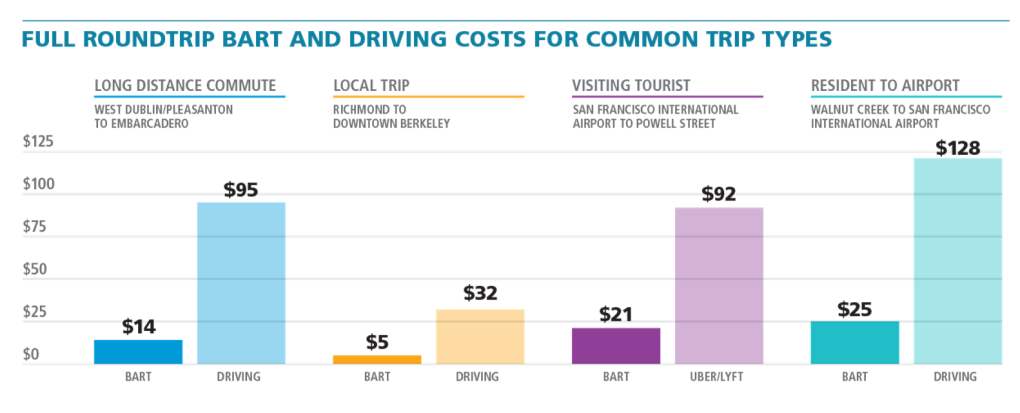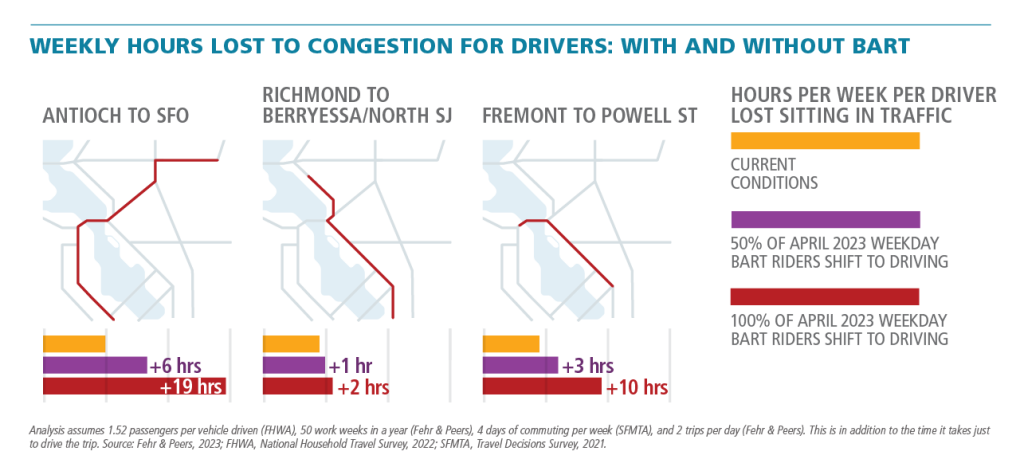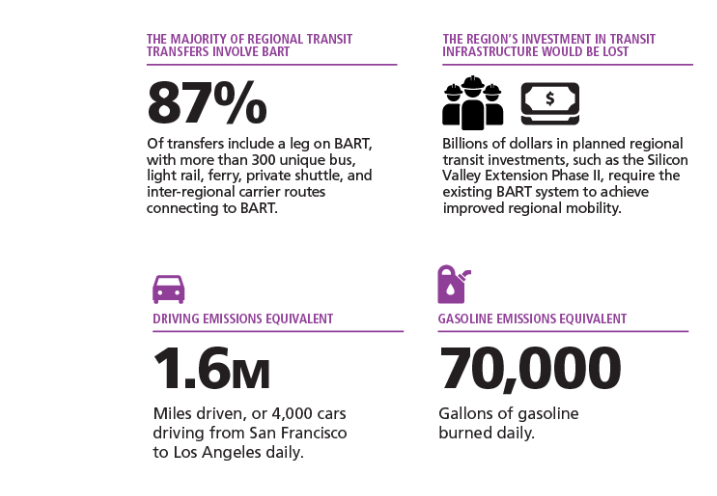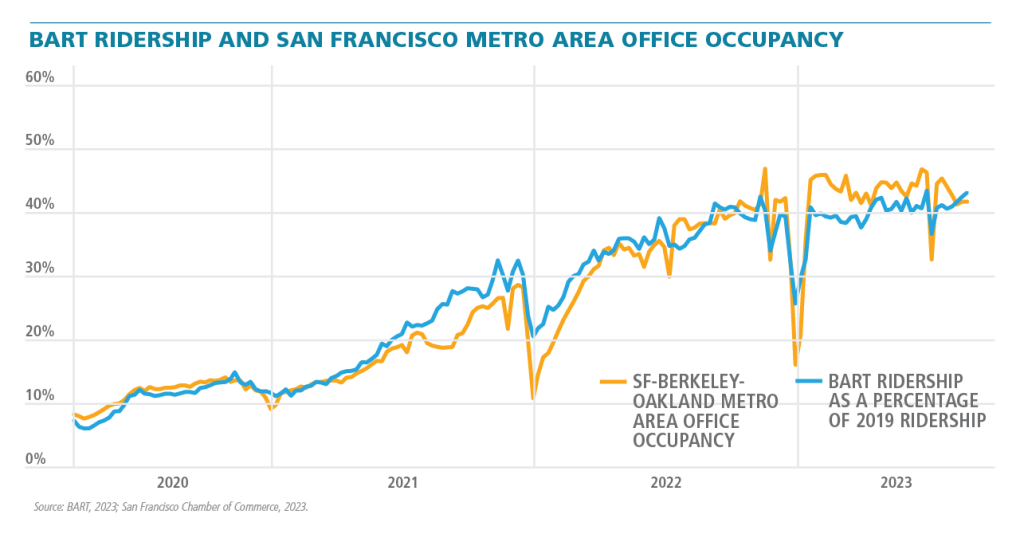Search Results
Pride parade helps set BART ridership records
The Lesbian, Gay, Bisexual and Transgender Pride parade and festival in San Francisco on Sunday helped set two ridership records for BART -- the highest Sunday ridership ever and the highest ridership week ever. The final numbers show 224,500 people rode BART on June 29, setting a Sunday ridership record
BART Board takes stand against discriminatory laws
The BART Board of Directors voted to take a stand against discriminatory laws at its Board meeting on Thursday, September 13, 2018. The Board adopted a policy prohibiting District-funded travel to states with anti-LGBTQ+ laws. Currently nine states are subject to the ban: Alabama, Mississippi, North Carolina
BART launches innovative tech training program partnership
BART has launched an innovative training program in partnership with Bay Area community colleges and local workforce investment boards to provide up to 100 students with the technical knowledge to pursue transit-related careers. “This is truly a win-win situation,” said BART Assistant General Manager for
BART’s “Role in the Region” detailed in new report that describes the benefits of BART and the devastating impacts of a Bay Area without it
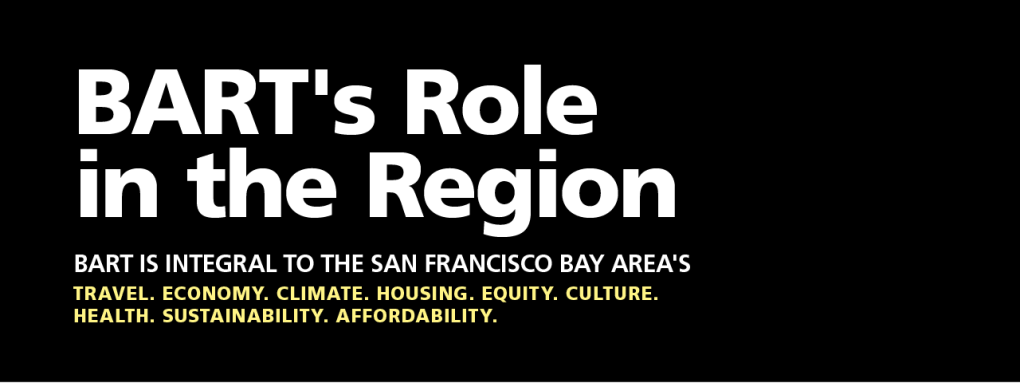
A new report released today paints a bleak picture of a Bay Area without BART while highlighting the benefits of the transit system to the region with a wide range of metrics.
Click here to view a pdf of the report and visit the project webpage at bart.gov/roleintheregion.
BART's Role in the Region Report aims to inform a regional conversation about the future of BART by describing its contributions to the Bay Area. It also provides predictions for how the Bay Area – its economic viability, traffic-choked roadways, cultural institutions, and more – will look without BART.
“The Bay Area and our regional transportation network have undergone significant changes since BART last conducted a Role in the Region study in 2016," said BART General Manager Bob Powers. “The 2024 Role in the Region Report arrives at a crucial crossroads for BART and the region, and the data, analyses, and stories within will serve as an important educational resource for the pivotal years ahead.”
In the report, you will find insights into key topics, including changes in travel patterns and funding; BART’s holistic benefits to the Bay Area; and BART’s future.
Below is a snapshot of some of the report’s findings:
BART’s benefits:
- BART is significantly more affordable than driving (Fig. 1 in slideshow). Example: Taking BART from West Dublin/Pleasanton Station to Embarcadero Station roundtrip costs $14. Driving the same route costs $95 when accounting for gas, tolls, parking, insurance, and maintenance.
- BART is integral to a connected regional transit network. Within a 15-minute walk of BART and one transfer to a connecting agency transit stop, you can reach 67% of the 9-county Bay Area region’s jobs, 61% of the region’s residents, and 60% of schools, parks, and libraries.
- In 2023, BART contributed $1.2 billion to the economy through more than 5,000 jobs when accounting for BART’s direct payroll expenditures, local vendor spending, and employee expenditures. Between 2019 and 2023, BART infused the local economy with more than $3.7 billion in construction spending and $1.7 billion in construction labor income.
If BART did not exist:
- Regional traffic congestion would worsen. Example: Drivers could experience up to an additional 19 hours lost to congestion weekly (Fig. 2).
- Traffic could increase by 73% on the Bay Bridge and 22% in the Caldecott Tunnel during morning peak commute hours.
- The regional transit network would fail to function, and there would be cascading effects across the 300 bus, light rail, ferry, private shuttle, and inter-regional routes that connect to BART (Fig. 3).
Changing regional travel trends:
- BART ridership is closely linked to regional office occupancy rates; both have recovered to ~43% of pre-pandemic levels (Fig. 4).
- Because of BART’s decreased farebox recovery, BART expects a budget deficit beginning in 2026 when state and federal emergency assistance runs out.
View the full Role in the Region Report.
Incentives shift BART riders out of the morning rush
“BART Perks,” a six-month test incentive program offered by BART and the San Francisco County Transportation Authority (SFCTA), concluded on February 28 and preliminary results reveal that incentives can successfully shift the travel behavior of BART riders. The Perks program incentivized riders to shift
Richmond BART Station elevators temporarily out of service
From Monday, April 6 through Friday, April 10, 2009, our crews will be interrupting elevator service at the Richmond BART Station to complete electrical improvements to the elevators. This elevator shutdown will temporarily limit access to both the BART and Capitol Corridor train platforms at this station. We
BART Board to vote on labor agreement with SEIU on Thursday
The BART Board of Directors will vote Thursday on the recently negotiated labor agreement with BART's largest union, the Service Employees International Union. You can find a summary of the SEIU agreement in the Board of Directors section of the BART website. The vote is scheduled to happen during a special
BART moves forward with $1 billion in extension projects
The BART Board of Directors has just moved forward with bringing Bay Area residents $1 billion in transit expansion projects. On Thursday, April 23, Board members voted to construct a 10-mile extension into eastern Contra Costa County and approved two significant elements of the funding plan for the Oakland
BART wins 2009 Excellence in Digital Marketing Award
BART has been honored by the San Francisco chapter of the American Marketing Association with a 2009 "Excellence in Digital Marketing" Award. BART won the award for its use of "digital distribution channels to reach consumers in a timely, relevant, personal and cost-effective manner." The other finalist in
BART Police Department reports surge in arrests for 2017
Newly compiled crime data shows BART officers made 1,730 arrests in 2017, a nearly 40% increase from a total of 1,238 arrests in 2016. The new figures also highlight an increased focus on fare evasion as well as significant declines in auto and bicycle thefts. “We’re doing all we can to increase the visible
